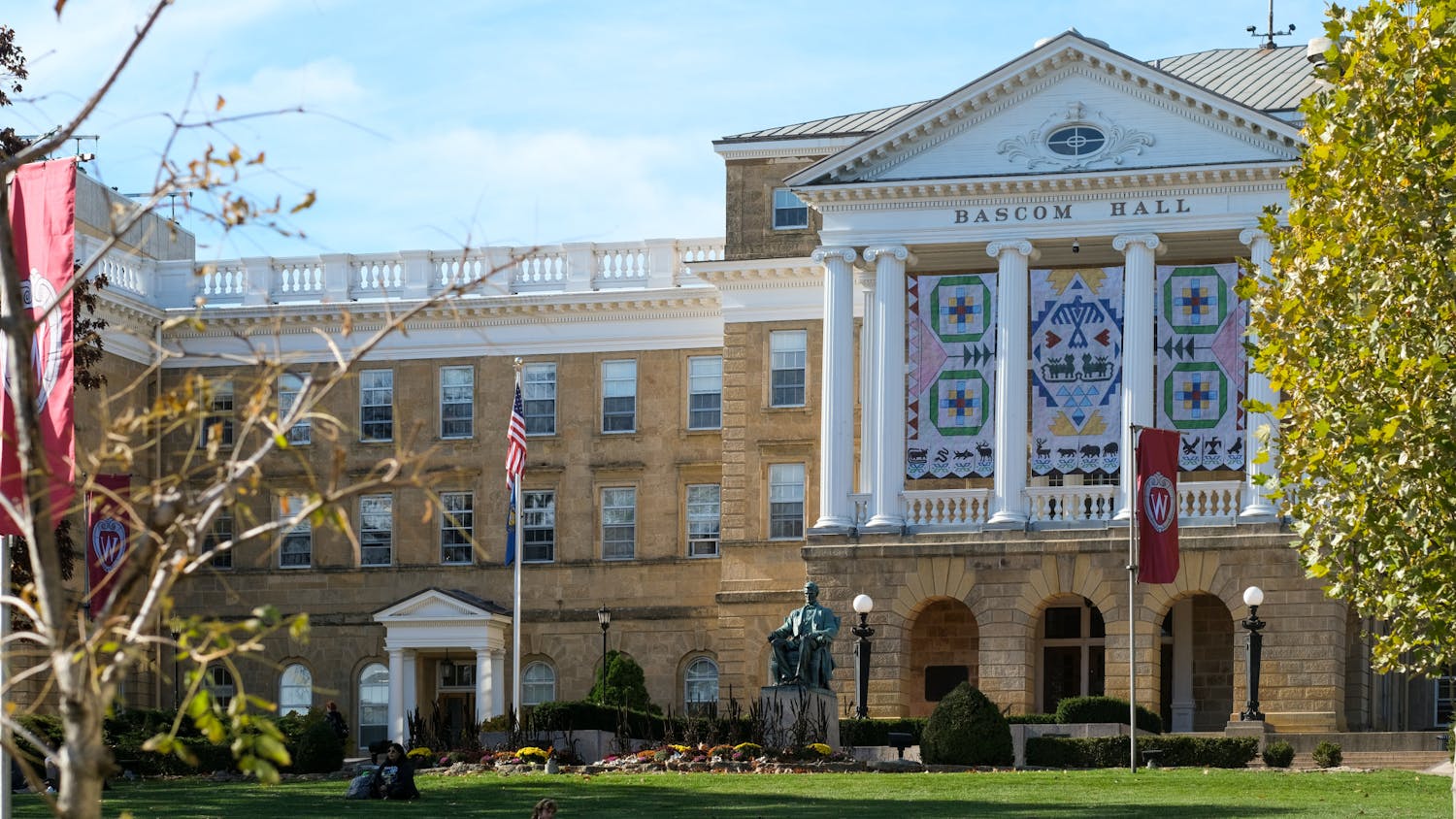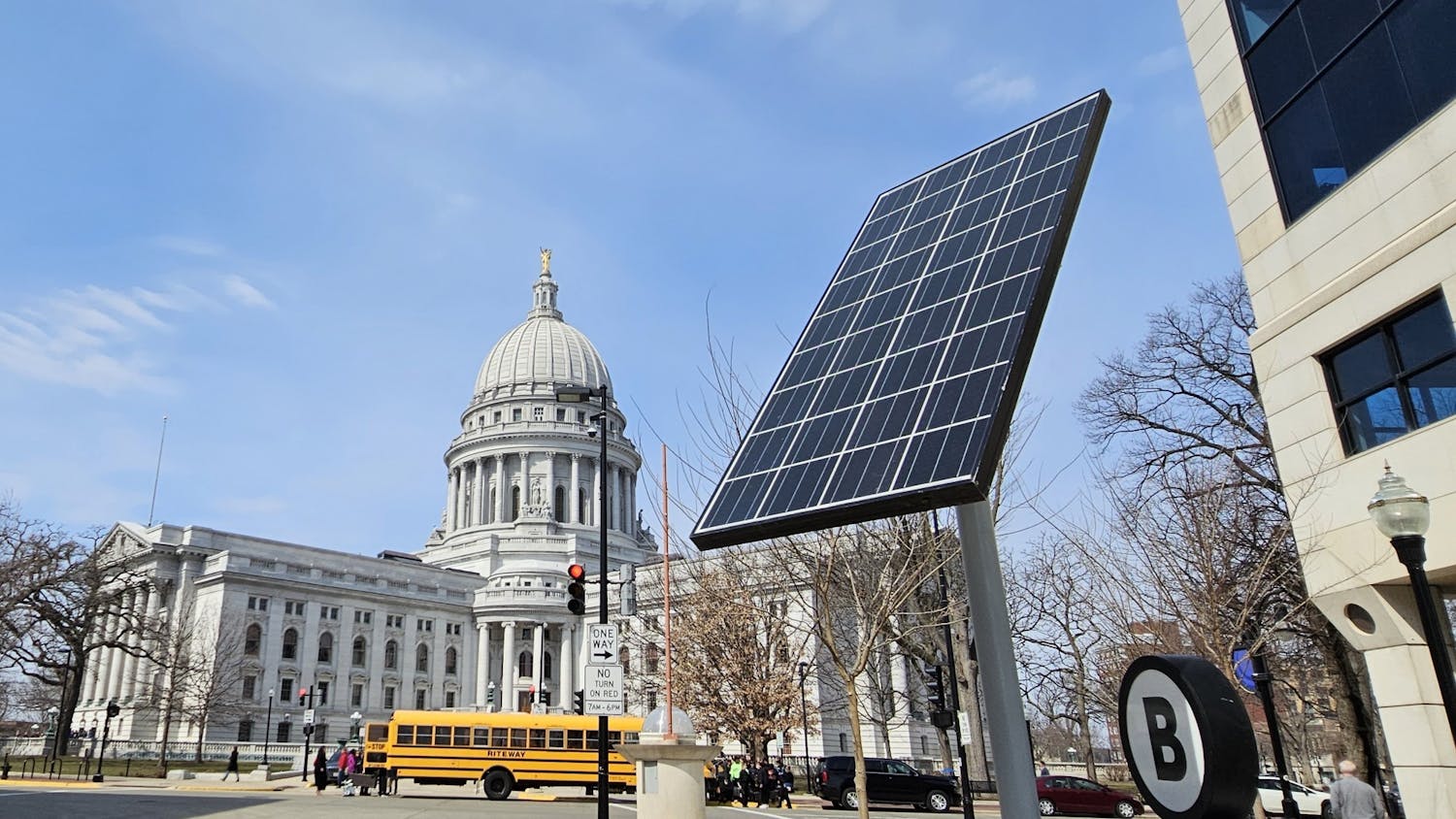Madison is a multi-faceted city with something for everyone, even during the quieter summer months when most of the students are gone. Huge lakes attract anglers, water skiers and sunbathers. Winding trails and paths throughout the city provide routes for bikers, runners and those looking for a bit of solitude. Summer attractions often overlooked by students milling around campus are the city gardens, currently in full bloom. They present a fragrant and refreshing alternative to those looking for ways to spend a sunny afternoon.
If you're looking for a place to take a date, or your mother when she comes to visit, the Olbrich Botanical Gardens are located at 3330 Atwood Ave. on the north shore of Lake Monona. The gardens make a beautiful outdoor array of plants containing a traditional, English-style Sunken Garden, the new Thai Pavilion and for those with allergies, a rock garden.
\We try to offer people a broad range of hardy plants that they can grow in their backyard that are disease-resistant so they do not have to use pesticides and will thrive,"" said Nancy Ragland, director of the gardens and a UW-Madison graduate in landscape architecture.
Another feature of the Olbrich Gardens is the Bolz Conservatory-home to more than 750 plants, about four dozen birds that propagate naturally beneficial insects and koi. The rich fragrance of orchids greets visitors upon arrival, and a walkway directs them through tropical brush, past waterfalls and ponds and up to a second-story overlook. Although the Conservatory is 12 years old, it still contains 90 percent of its original plant material.
""It's difficult to grow tropical plants, used to 12 hours of light a day, in Wisconsin,"" said Ragland.
However, gardens grow shaggy, just like people. Once a year the staff closes down the conservatory to do some much-needed pruning. The goal: to create ""light gaps"" in the fast-growing canopy. In rainforests, tall, light-blocking trees are normally felled by wind and storms. The mid-March pruning is a tremendous job and leaves the canopy looking a bit bald, but it grows back rapidly.
""In a way, it's the same thing nature does,"" Horticulture Director Jeff Epping explained. ""If you don't prune the canopy, it's going to be eating up all the light.""
The gardens themselves are free to the public, and entrance to the conservatory costs $1. In the visitor center one can also find a library full of information on Midwest horticulture and tropical gardens.
Students who live in the Lakeshore dorms are treated daily to the beauty of the Allen Centennial Gardens. The gothic Victorian building granting entry into the gardens once housed the agriculture college's first four deans, and today awes incoming freshmen during their Student Orientation, Admission and Registration visit.
To those who pass by on their way to class or view it from the windows of Slichter, the gardens look well established. In fact, they are only 14 years old-the gardens were destroyed in the 1980s to make way for a new Plant Science building.
Today, designers and state certified landscape architects decide upon the annual layout of the garden. Layout is chosen well in advance-next year's garden design has already been planned and the plants and bulbs have been ordered. This year the garden features approximately 90 pansies and several thousand bulbs.
The Allen Centennial Gardens are more than just a place to walk with one's visiting grandparents; weddings held there make up most of the money used to pay student workers of the grounds. The gardens are such a popular place to get married that weekends are almost completely booked for this year and some are even booked into 2004. Besides providing background for the joining of holy matrimony, the gardens also host memorial services, gatherings of plant societies and geriatric holiday tours.
The Allen gardens are free to roam about, which is always nice for the college budget. The gardens are supported by donations.
""The garden is fully and wholly philanthropically funded,"" explained Head Gardener and Outreach Specialist William Hoyt. ""In order to maximize benefactors' help, I beg.\





